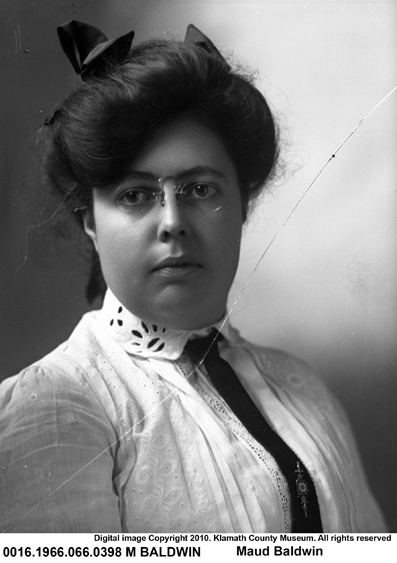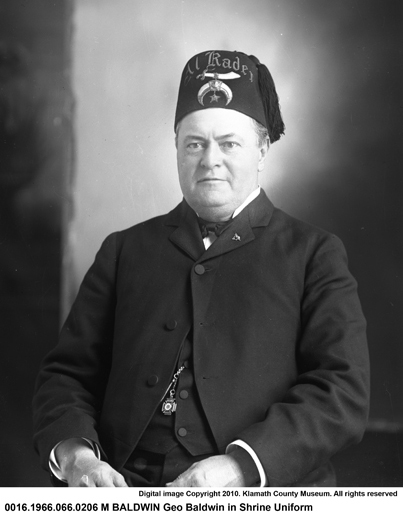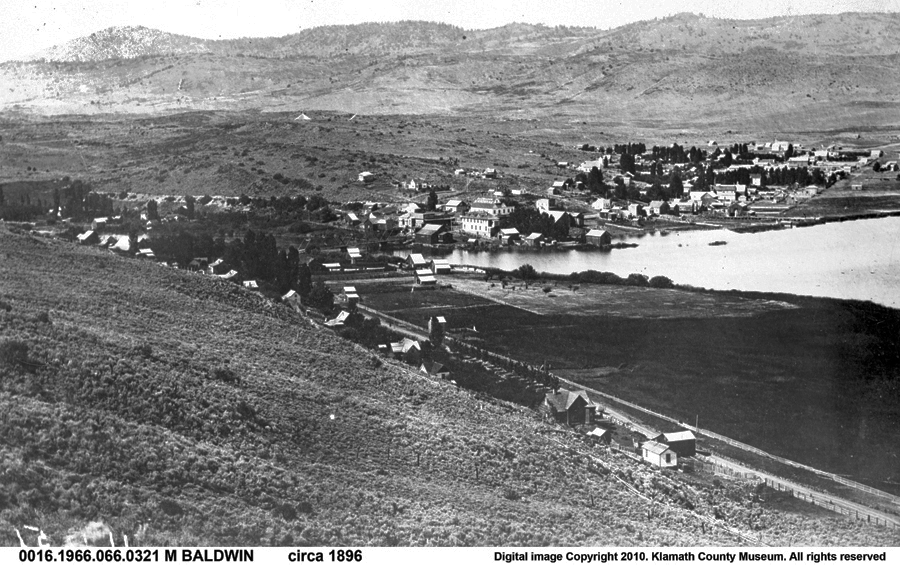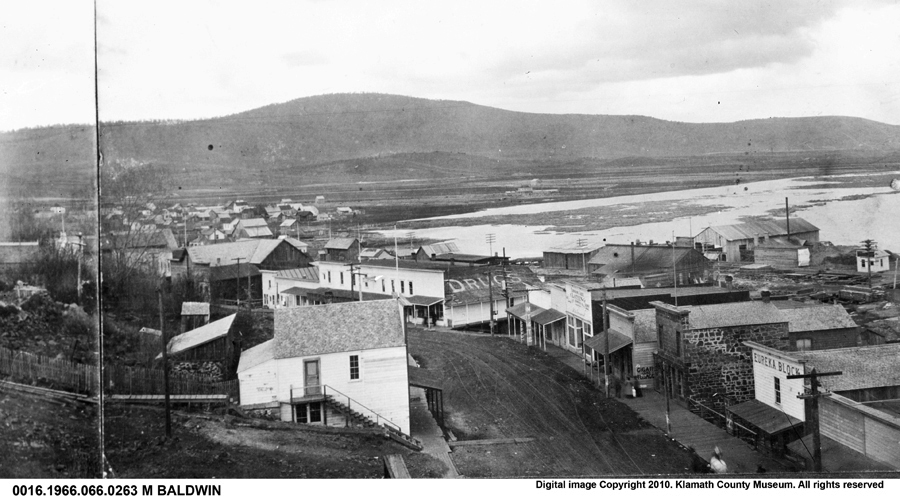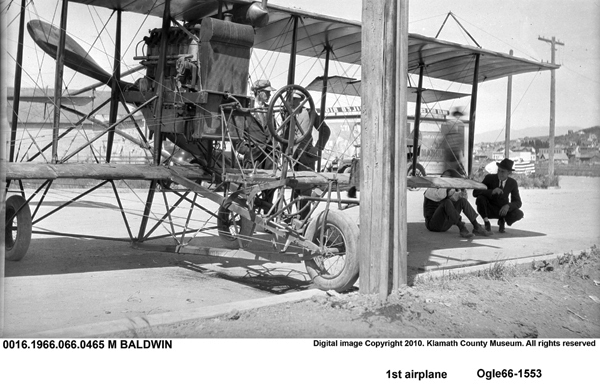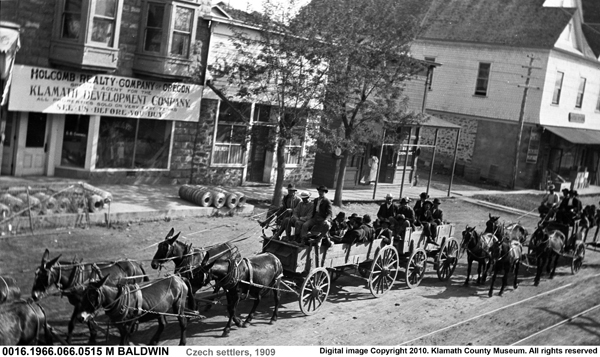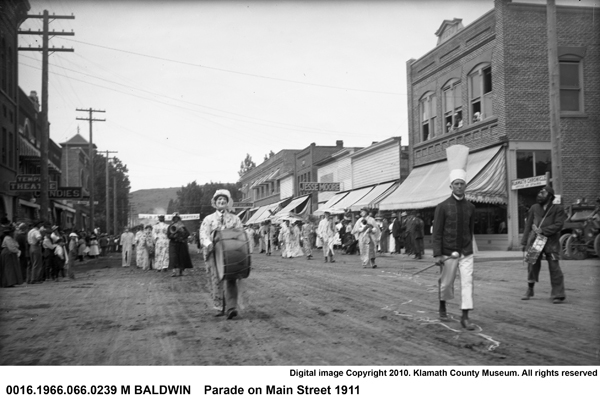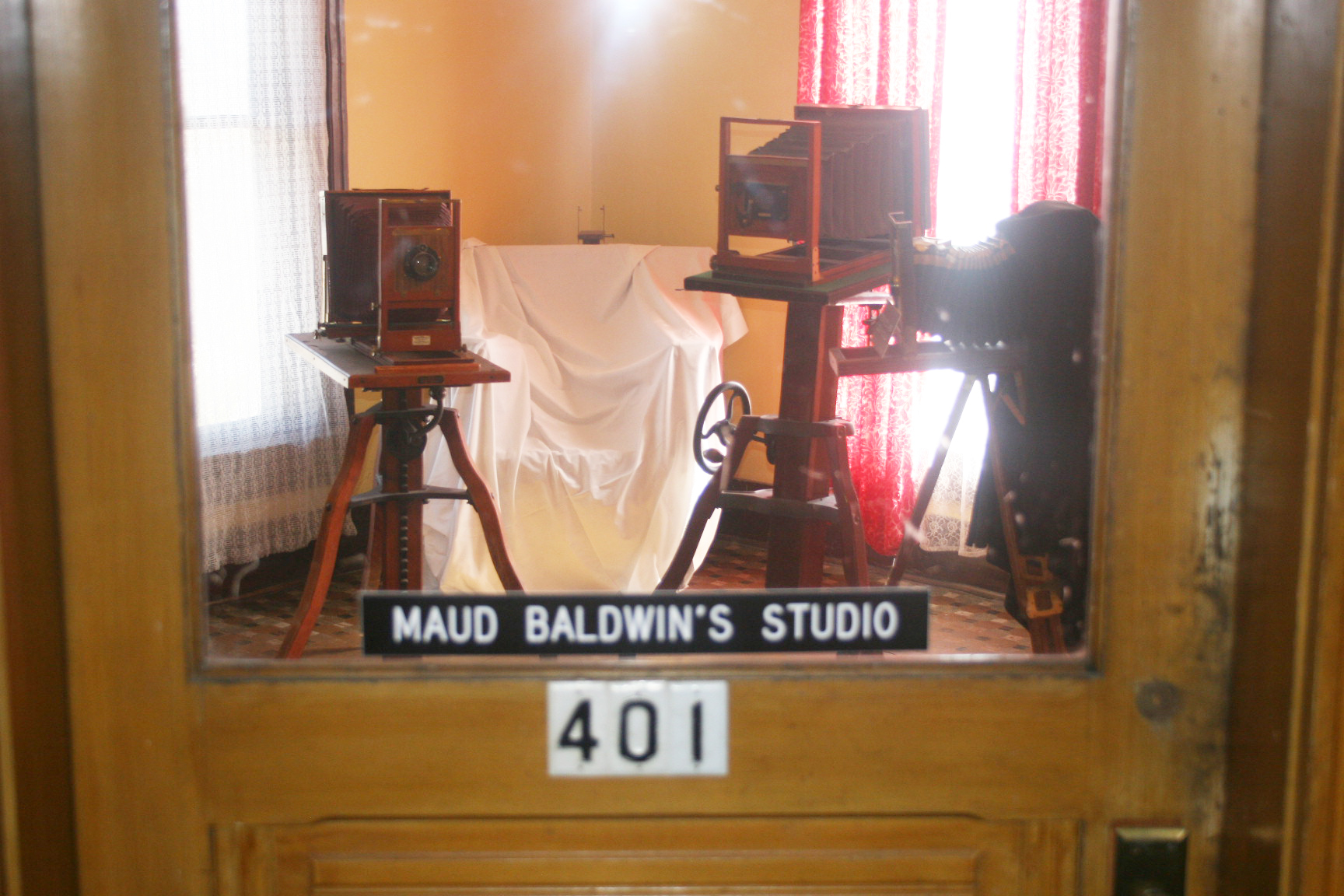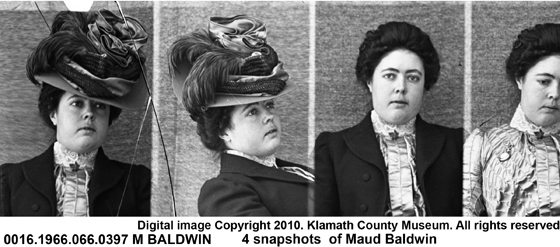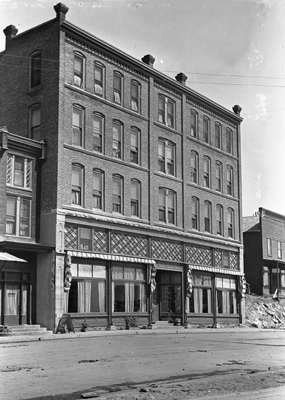Maud Baldwin was born in Linkville (now Klamath Falls) on August 8, 1878, the second of five children of George T. and Josephine Baldwin. Her father was a prominent businessman and politician in southern Oregon, but it is Maud who became better known for her photography and intriguing life.
George T. Baldwin owned the Tin Shoppe in Linkville, which in 1881 he expanded into a hardware business. Over the years, he served as deputy sheriff, county treasurer, superintendent of Klamath County schools, and county judge. Active in the Democratic Party and the Chamber of Commerce, he helped change the name of Linkville to Klamath Falls in 1893. He also established the first electric power plant in Klamath Falls in 1895 and served in the state senate from 1917 until his death in 1920.
Maud, who had three younger brothers, was reportedly her father's favorite child, and he fulfilled her every wish. At age sixteen, she attended Oregon State Normal School (now Western Oregon University) in Monmouth, but she did not complete the curriculum there. By 1896, she had begun to pursue photography in earnest. In 1906, she attended the California College of Photography in Palo Alto, California, and became part of a wave of women photographers who worked at the turn of the twentieth century.
At the time, photography was a complicated and labor-intensive process that required spreading silver emulsion on glass plates in complete darkness before exposing the plate in a large wooden camera. In a darkroom, the plate was washed with chemicals and placed onto photographic paper, which was exposed to light through a projector, then soaked in chemical baths and rinses. The result was a highly detailed print that was the size of the negative. The cameras and tripods were heavy and bulky, and working in daylight with glass plates was challenging. Smaller cameras and pre-processed nitrate films became available around 1905.
In 1907, George Baldwin opened the Baldwin Hotel in downtown Klamath Falls, near the Link River. Maud Baldwin had a photography studio on the fourth floor, where she displayed Native American baskets and hats and other artifacts. Reportedly, Maud had a powerful personality and a booming voice. She took thousands of photographs of buildings, Native Americans, loggers, ranchers, Crater Lake, scenery, street scenes, paddlewheel steamboats, schools, children, wildlife, reclamation projects, automobiles, and local events. Like her father, she was active in civic organizations and led a full social life. By about 1915, however, she was taking few photographs.
Surviving Baldwin family members and researchers report that Maud was an exceptionally egalitarian person, showing sincere respect for all people. As one source put it, “Her popularity and acceptance by those in the highest social order, to the scrub brush farmer and local Indian was uncanny." She was "readily welcomed, befriended and admired.”
In 1920, George Baldwin died while serving in the state senate. Josephine Baldwin was recovering from a stroke at the time, and Maud was her caregiver. Her father’s death apparently hit Maud Baldwin hard. In addition to caring for her mother, she managed the hotel and other Baldwin interests. Her brothers followed their own careers and apparently did not help her much, perhaps because Maud inherited the bulk of their father’s estate.
In 1923, Maud Baldwin reportedly began a romance with a cook at a local restaurant. He left for Alaska in 1924, but Baldwin did not accompany him because of her obligations.
In May 1926, Maud Baldwin drowned in the Link River near the bridge between the Baldwin Hotel and the Baldwin home—a part of the river known as Lake Ewauna. She left a suicide note that she was “going insane” and that she could be found in the lake. Some have speculated that Baldwin was heartbroken at the loss of her lover, while others suggest that exposure to photographic chemicals may have affected her mind and emotions. She may also have been depressed about the loss of her father and overwhelmed with the demands of managing her father’s business affairs and caring for her mother.
Maud Baldwin’s photographs are some of the most significant visual documentation of early twentieth-century Klamath Falls and its residents. Some of her photos are displayed at many businesses in and around Klamath Falls, and her surviving negatives are archived at the Klamath County Museum. It is almost certain, however, that many of her images have been lost.
-
![Maud Baldwin.]()
Baldwin, Maud, portrait.
Maud Baldwin. Photo Maud Baldwin, Klamath County Museums, 0016.1966.066.0398
-
![Maud Baldwin.]()
Baldwin, Maud, standing.
Maud Baldwin. Photo Maud Baldwin, Klamath County Museums, 0016.1966.066.0209
-
![George Baldwin.]()
Baldwin, George, portrait as Shriner.
George Baldwin. Photo Maud Baldwin, Klamath County Museums, 0016.1966.066.0206
-
![Klamath Falls, about 1896.]()
Klamath Falls, ca 1896.
Klamath Falls, about 1896. Photo Maud Baldwin, Klamath County Museums, 0016.1966.066.0321
-
![Southern view of Klamath Falls from esplande, about 1900-1920.]()
Klamath Falls, view S from esplanade.
Southern view of Klamath Falls from esplande, about 1900-1920. Photo Maud Baldwin, Klamath County Museums, 0016.1966.066.0372
-
![Klamath Falls, about 1900-1920.]()
Klamath Falls, ca 1900-1920.
Klamath Falls, about 1900-1920. Photo Maud Baldwin, Klamath County Museums, 0016.1966.066.0263
-
![First airplane in Klamath Falls, about 1911.]()
Klamath Falls, first airplane in.
First airplane in Klamath Falls, about 1911. Photo Maud Baldwin, Klamath County Museums, 0016.1966.066.0465
-
![Bud Mars flying aeroplane, July 5, 1911.]()
Klamath Falls, Bud Mars in airplane, Jul 5 1911.
Bud Mars flying aeroplane, July 5, 1911. Photo Maud Baldwin, Klamath County Museums, 0016.1966.066.0466
-
![Czech settlers in Klamath Falls, 1909.]()
Klamath Falls, Czech settlers, 1909.
Czech settlers in Klamath Falls, 1909. Photo Maud Baldwin, Klamath County Museums, 0016.1966.066.0515
-
![Parade on Main St. Klamath Falls, 1911.]()
Klamath Falls, parade on Main St, 1911.
Parade on Main St. Klamath Falls, 1911. Photo Maud Baldwin, Klamath County Museums, 0016.1966.066.0239
-
![Baldwin Hotel, 1910s.]()
Baldwin Hotel exterior, ca. 1910s.
Baldwin Hotel, 1910s. Photo Maud Baldwin, Klamath County Museums, 0016 1966 066 0273
-
![Baldwin Hotel, Maud Baldwin's studio, 2009.]()
Baldwin Hotel interior, Maud studio, 2009.
Baldwin Hotel, Maud Baldwin's studio, 2009. Photo Charles Edson
-
![Maud Baldwin.]()
Baldwin, Maud, 4 snapshots.
Maud Baldwin. Photo Maud Baldwin, Klamath County Museums, 0016.1966.066.0397
Related Entries
Map This on the Oregon History WayFinder
The Oregon History Wayfinder is an interactive map that identifies significant places, people, and events in Oregon history.
Further Reading
Drew, Harry J. Maud Baldwin: Photographer (Klamath County Museum Research Paper No. 10). Klamath Falls: Klamath County Museum, 1981.
Warner, Suzanne M.M. "Maud Evangeline Baldwin: Oregon Photographer, 1878–1926." MA thesis, Southern Oregon State College, 1997.

